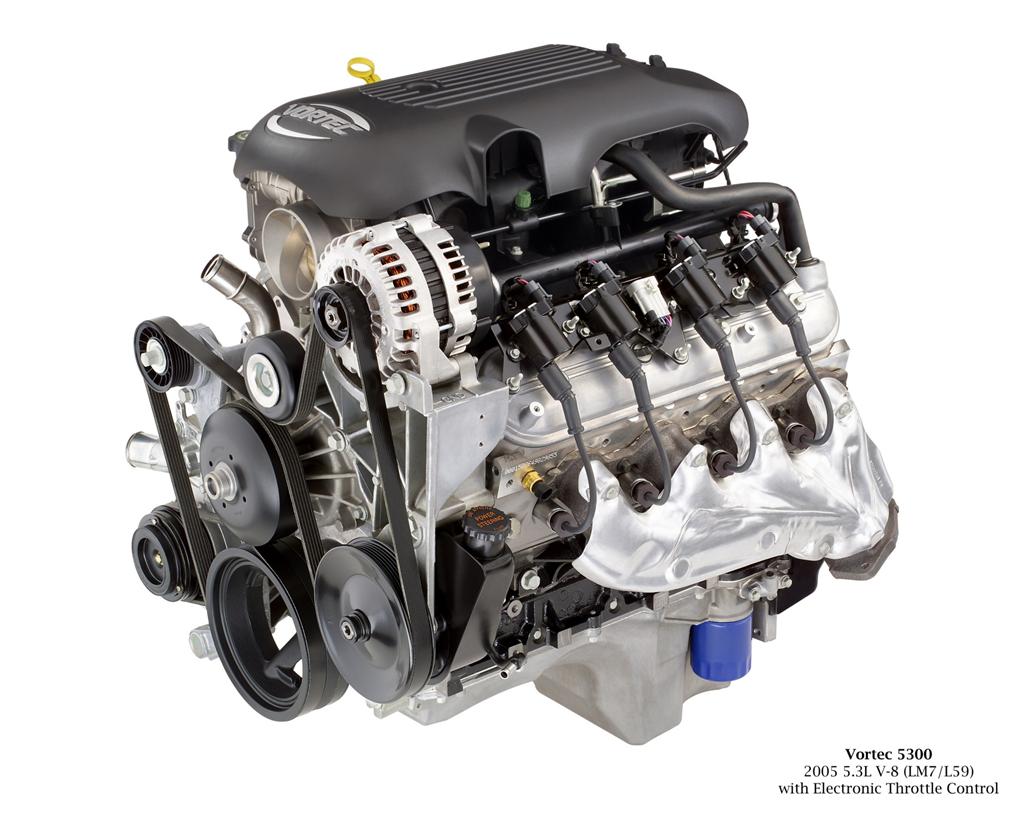What Engine Is In A 2005 Cadillac Escalade

The 2005 Cadillac Escalade, a symbol of luxury and American automotive prowess, wasn't just about its opulent interior and imposing road presence. Underneath its sculpted hood lay a robust engine, the heart of its performance. Understanding exactly which engine powered this vehicle and its technical specifications offers a fascinating glimpse into automotive engineering of the mid-2000s.
The Standard Engine: The Vortec 6.0L LQ9 V8
The primary engine found in the 2005 Cadillac Escalade was the Vortec 6.0L LQ9 V8. This engine wasn't just a generic V8; it was a specifically tuned version designed for high-performance truck and SUV applications. To truly understand its capabilities, we need to delve into its key features and specifications.
Key Specifications of the Vortec 6.0L LQ9:
- Displacement: 5,967 cc (364.1 cu in)
- Bore and Stroke: 101.6 mm (4.00 in) x 92 mm (3.62 in)
- Compression Ratio: 10.0:1
- Firing Order: 1-8-7-2-6-5-4-3
- Engine Block Material: Cast Iron
- Cylinder Head Material: Aluminum
- Valvetrain: Overhead Valve (OHV), 2 valves per cylinder
- Fuel Delivery: Sequential Fuel Injection (SFI)
- Horsepower: 345 hp (257 kW) @ 5200 rpm
- Torque: 380 lb-ft (515 Nm) @ 4000 rpm
These specifications reveal a robust engine built for both power and reliability. The cast-iron block provides exceptional durability, essential for handling the high stresses associated with towing and hauling. The aluminum cylinder heads, on the other hand, contribute to weight reduction and improved heat dissipation.
Understanding the Technology
The LQ9 engine leveraged several key technologies to achieve its performance figures:
- Overhead Valve (OHV) Design: The OHV, also known as pushrod, design is a traditional American V8 architecture. While potentially not as sophisticated as Overhead Cam (OHC) designs in terms of achieving very high RPMs, it offers advantages in packaging (smaller physical engine size), reliability, and low-end torque. The LQ9 leverages this architecture to deliver its impressive torque at relatively low engine speeds, crucial for moving a large vehicle like the Escalade.
- Sequential Fuel Injection (SFI): SFI ensures that each cylinder receives its fuel charge independently and precisely timed. This leads to improved fuel efficiency, reduced emissions, and enhanced engine responsiveness compared to older fuel injection systems.
- Electronic Throttle Control (ETC): Also known as "drive-by-wire," ETC replaces the direct mechanical linkage between the accelerator pedal and the throttle body with an electronic system. This allows the engine control unit (ECU) to precisely manage throttle opening based on driver input, vehicle speed, and other factors, leading to smoother operation and improved fuel economy.
Variations and Exceptions
While the Vortec 6.0L LQ9 was the standard engine in the 2005 Cadillac Escalade, it's important to note potential variations depending on specific trim levels and optional packages. Specifically, the Escalade ESV (Extended Length Vehicle) and the Escalade EXT (pickup truck variant) also primarily featured the LQ9. However, understanding the nuanced differences is key.
It's crucial to verify the engine code on the vehicle itself to be absolutely certain. The engine code is typically found on a sticker located in the glove compartment or on the engine itself. The LQ9 code should be clearly visible if it is indeed the engine installed.
Why the LQ9 for the Escalade?
General Motors' decision to equip the 2005 Cadillac Escalade with the Vortec 6.0L LQ9 was based on several factors:
- Performance Requirements: The Escalade was designed to be a capable SUV, able to tow trailers, carry passengers and cargo, and provide a comfortable driving experience. The LQ9's high torque output made it well-suited for these demands.
- Brand Image: Cadillac represented luxury and performance. The LQ9 engine delivered the power and refinement expected of a Cadillac vehicle.
- Reliability and Durability: The robust construction of the LQ9, with its cast-iron block, ensured longevity and reliability, important considerations for a vehicle intended to be driven for many years.
In essence, the LQ9 struck a balance between performance, reliability, and refinement that aligned perfectly with the Cadillac brand and the Escalade's intended use.
Alternative Engine Considerations (Highly Unlikely)
While extremely unlikely for the 2005 model year Escalade, it's worth noting that in some very rare and unusual circumstances (such as an engine replacement due to failure or modifications), a different engine *could* potentially be present. However, these instances would be far from factory standard and would require significant modifications to the vehicle. Possible, though improbable, alternatives might include:
- Other GM V8 Engines: Another GM V8 engine, like a 5.3L or even a later-generation 6.2L, *could* be swapped in, but this would require extensive modifications to the engine mounts, wiring harness, and potentially the transmission.
- Non-GM Engines: While even more unusual, it's theoretically possible (though highly improbable and impractical) that a non-GM engine has been installed. This would be a custom job requiring significant engineering and fabrication.
Again, the likelihood of encountering an Escalade with an engine other than the LQ9 is exceptionally low, especially in a stock or unmodified vehicle. A thorough inspection and verification of the engine code are essential to confirm the actual engine installed.
Conclusion
The 2005 Cadillac Escalade was primarily powered by the Vortec 6.0L LQ9 V8 engine, a powerful and reliable workhorse that provided the performance and refinement expected of a luxury SUV. Its OHV design, sequential fuel injection, and other advanced technologies contributed to its impressive horsepower and torque figures. While uncommon, it is always best practice to verify the engine code to definitively identify the specific engine installed in any vehicle, but for a standard 2005 Escalade, the LQ9 is the expected engine.
